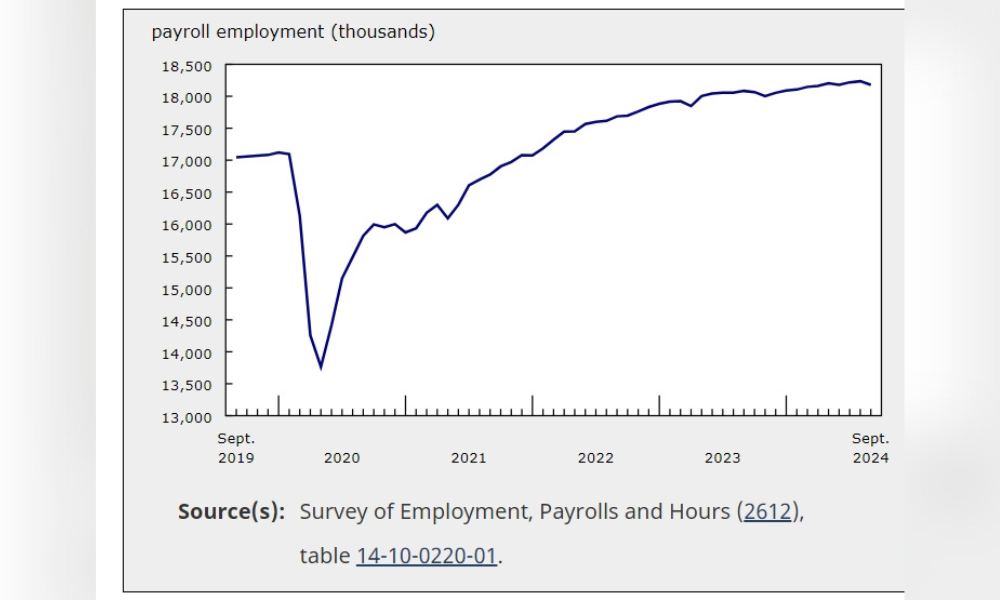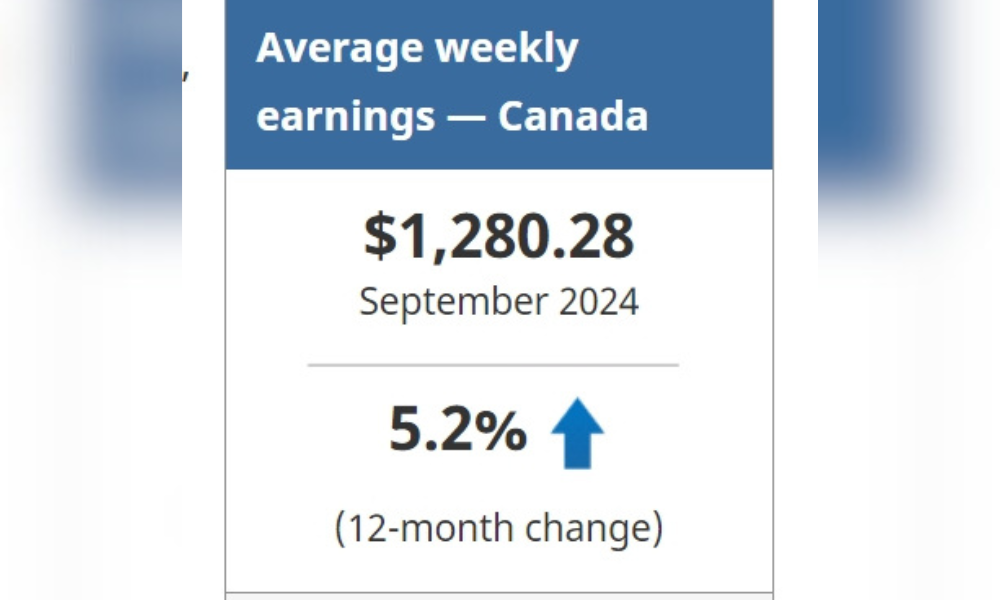
Over 57,000 payroll jobs cut, with key sectors showing steep declines

The number of employees receiving pay and benefits from their employer—measured as "payroll employment" in the Survey of Employment, Payrolls and Hours—fell by 57,400 (-0.3%) in September, according to Statistics Canada.
This followed little change in August and an increase of 39,500 (+0.2%) in July. On a year-over-year basis, payroll employment was up 94,900 (+0.5%) in September.
Despite the job losses, average weekly earnings increased by 0.5% month-over-month to $1,280, marking a 5.2% year-over-year gain. Average weekly hours worked held steady at 33.5 hours.
Month over month, average weekly earnings were up 0.5% to $1,280 in September, following a 0.7% increase in August.
On a year-over-year basis, average weekly earnings were up 5.2% in September, following a 4.9% increase in August. In general, growth in average weekly earnings can reflect a range of factors, including changes in wages, composition of employment, hours worked and base-year effects.
In September, average weekly hours worked (33.5 hours) were little changed on a month-over-month and year-over-year basis.

The retail trade sector led job losses, shedding 13,200 positions (-0.7%) in September as part of a broader decline throughout 2024, said StatCan.
Since January, retail payrolls have fallen by 30,100 jobs (-1.5%), with building material and supplies dealers, clothing retailers, and sporting goods stores seeing the steepest declines. Similarly, accommodation and food services lost 9,100 jobs (-0.7%), driven by a drop in restaurant employment.

Professional, scientific, and technical services recorded a second straight month of declines, losing 5,700 jobs (-0.5%), with computer systems design and related services taking the biggest hit. The construction sector also experienced a setback, with payrolls falling by 5,600 (-0.5%), concentrated in heavy engineering and specialty trade contractors.
Job vacancies increased in manufacturing (+3,600) and information and cultural industries (+3,400) but declined in finance and insurance (-4,800) and administrative and support services (-3,600). Healthcare vacancies remained high at 112,900, though stable from August, maintaining the highest vacancy rate of all sectors at 4.5%, said StatCan.
Regionally, Quebec saw a drop in job vacancies (-6,500), while Prince Edward Island experienced a notable rise (+700). The national job vacancy rate edged up to 3.0%, and the ratio of unemployed individuals per vacancy dropped slightly to 2.7, reflecting a marginal decrease in unemployment.